If you’re looking for a way to spruce up your home with some greenery, but don’t have a lot of light to work with, then low light plants may be the solution for you! In this blog post, we’ll give you a crash course on some of the best low light plants out there, so that you can find the perfect one for your home.
No day is so bad it can’t be fixed with a nap and a few low light plants.
If you are looking to add some greenery to your home but don’t have a lot of natural light, don’t despair! There are plenty of beautiful plants that can thrive in low light conditions. In this blog post, we’ll introduce you to some of our favorite low light plants and give you some tips on how to care for them.
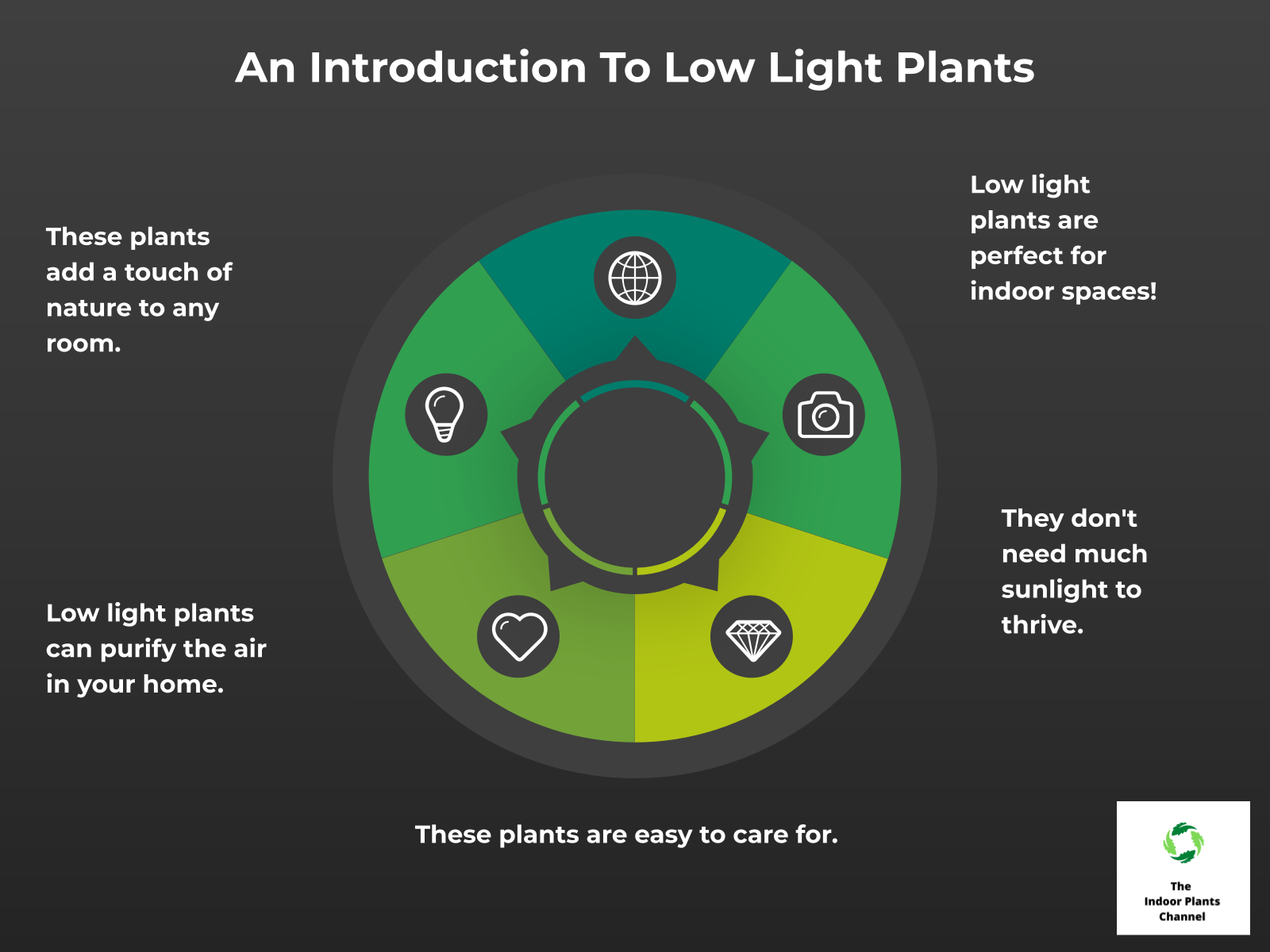
What Are Low Light Plants?
Low light plants are those that can grow in conditions where there is little natural light. This means they are ideal for growing in rooms that don’t get a lot of sunlight, such as north-facing rooms or rooms with small windows. Many low light plants are also good for growing in offices, where artificial lighting is the norm.
There are a wide variety of low light plants available, so there is sure to be one that is perfect for your needs. Some of the most popular low light plants include pothos, snake plants, and spider plants. These plants are all easy to care for and can thrive in a wide range of conditions.
So if you’re looking for a plant that can grow in low light, don’t hesitate to give one of these a try.
The Benefits Of Low Light Plants.
If you are looking for a plant that does not require a lot of sunlight, then you should consider a low light plant. There are many benefits to growing low light plants, including the fact that they are easier to care for and can thrive in a variety of environments.
Some of the benefits of growing low light plants include:
1. They are easier to care for – Low light plants do not require as much sunlight as other plants, so they are easier to care for. They can be grown indoors without the need for special lighting, making them a great option for those who do not have a lot of time to care for their plants.
2. They can thrive in a variety of environments – Low light plants can thrive in both sunny and shady areas. This makes them a great option for those who want to grow plants in areas that do not get a lot of sunlight.
3. They are available in a wide range of varieties – There are a wide variety of low light plants available, so you can find one that is perfect for your home or office. Whether you are looking for a plant that is easy to care for or one that can thrive in a variety of environments, there is a low light plant that is right for you.
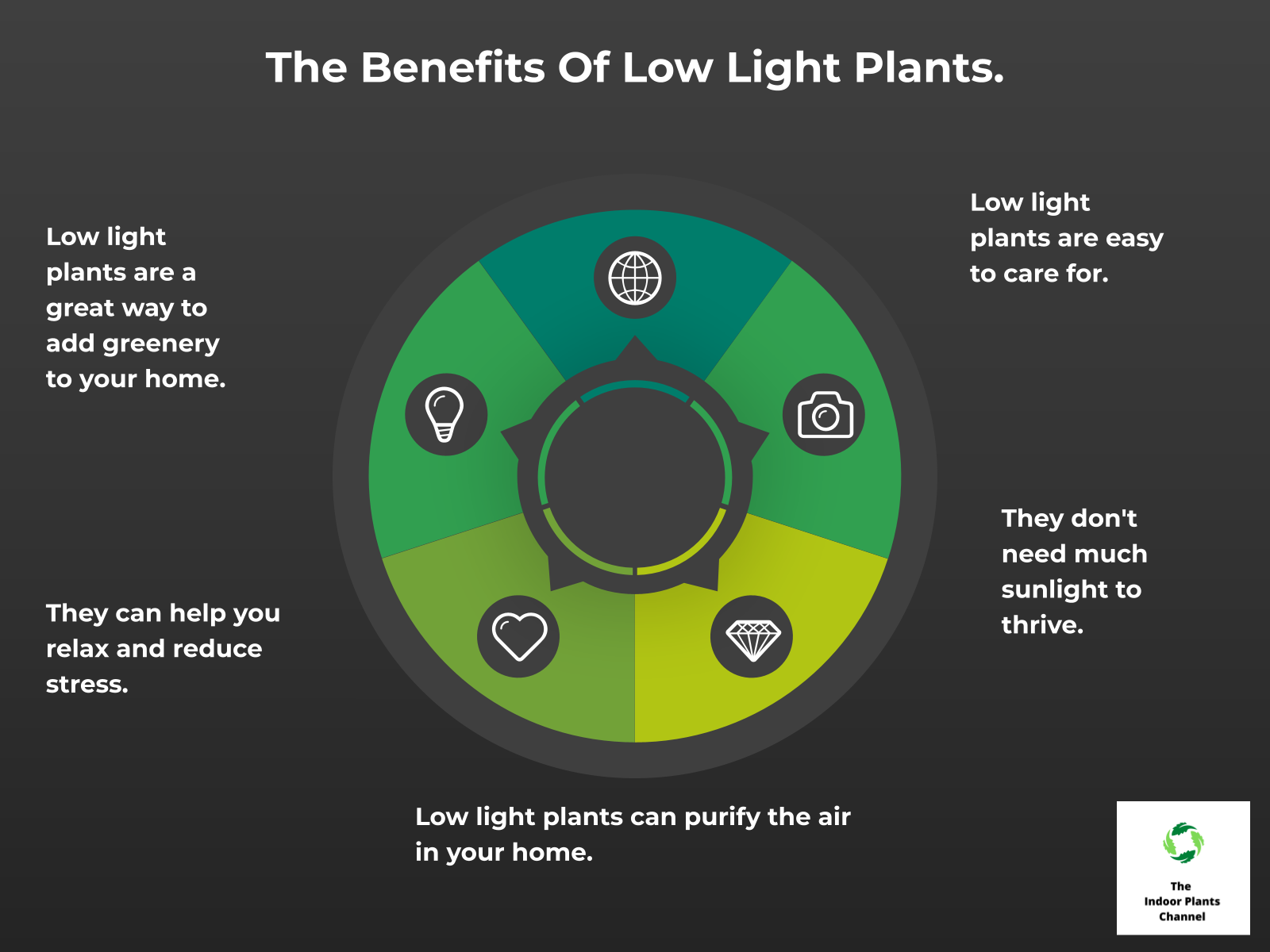
How To Care For Low Light Plants.
“Low light plants” refers to a wide variety of plants that can tolerate lower light conditions than most other plants. These plants are perfect for indoor spaces or areas that don’t receive a lot of direct sunlight.
There are a few things to keep in mind when caring for low light plants:
-Make sure the pot has drainage holes to allow excess water to escape.
-Water low light plants when the top inch of soil is dry.
-Fertilize monthly with a half-strength solution of liquid fertilizer.
-Place plants in an area with bright, indirect sunlight.
With a little care, low light plants can thrive in any home or office!
The History Of Low Light Plants.
The history of low light plants is a fascinating one. For centuries, people have cultivated plants that can thrive in low light conditions. This is because low light plants are often very hardy and can survive in conditions that other plants cannot.
Some of the most popular low light plants include ferns, philodendrons, and peace lilies. These plants are all native to tropical regions, where they grow in the shade of larger plants. This helps them to stay cool and moist, and also protects them from the intense sun.
Ferns were some of the first plants to be cultivated for low light conditions. They were originally found in the forests of Europe and Asia, and were brought indoors by the Victorians. Ferns were very popular during this time, and were often used to decorate homes and public buildings.
Philodendrons are another popular low light plant. These plants are native to the rainforests of South America, where they grow in the shade of taller trees. Philodendrons were first introduced to Europe in the early 1800s, and quickly became popular houseplants.
Peace lilies are a type of plant that is native to the tropics of Asia. They grow in the shade of larger plants, and produce white flowers that look like lilies. Peace lilies were introduced to Europe in the late 1800s, and have been popular houseplants ever since.
Low light plants have been popular for centuries because they are hardy and can survive in conditions that other plants cannot. This makes them perfect for growing in homes and offices, where they can add a touch of nature to any space.
The Different Types Of Low Light Plants.
There are many different types of low light plants. Some common low light plants include:
-Pothos
-Philodendron
-Ficus
-Dracaena
-Sansevieria
These plants are all common houseplants that can tolerate low light conditions. They are all easy to care for and make great additions to any home.
How To Choose The Right Low Light Plant For Your Home.
“How to choose the right low light plant for your home”
When choosing a low light plant for your home, there are a few things you need to take into account. The first is the amount of light the plant needs. Some plants need more light than others, so you need to make sure you choose a plant that will be able to thrive in the amount of light you have available. The second thing to consider is the size of the plant. Some plants can grow very large, so you need to make sure you have enough space for the plant to grow. Finally, you need to consider the care the plant needs. Some plants are very easy to care for, while others require a bit more work. Choose a plant that you are willing to care for and that will fit into your lifestyle.
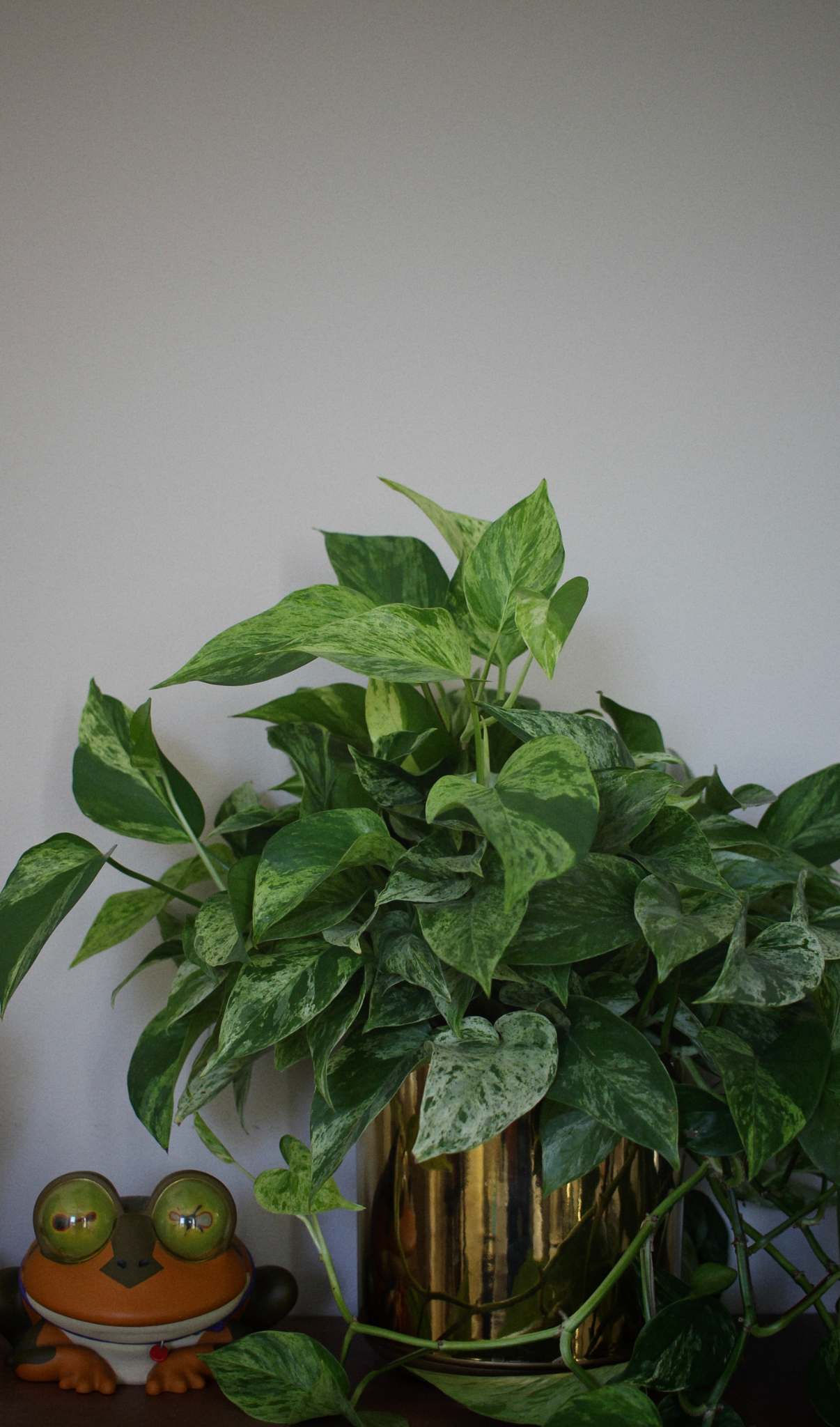
Pothos
The Top 10 Low Light Plants.
Pothos:
Pothos is a very popular houseplant, and for good reason! It is very easy to care for, and can tolerate low light conditions. Pothos is a vine, so it can be trained to grow up a trellis or pole.
Snake plant:
Snake plants are another great option for low light conditions. They are very tolerant of neglect, and can even thrive in conditions that other plants would struggle in. Snake plants are also known for being very good at purifying the air.
Philodendron:
Philodendrons are a classic houseplant, and are very easy to care for. They are tolerant of low light conditions, and can even survive in very dim light. Philodendrons are vines, so they can be trained to grow up a trellis or pole.
ZZ plant:
ZZ plants are a great option for low light conditions. They are very tolerant of neglect, and can even thrive in conditions that other plants would struggle in. ZZ plants are also known for being very good at purifying the air.
Chinese evergreen:
Chinese evergreens are another great option for low light conditions. They are very tolerant of neglect, and can even thrive in conditions that other plants would struggle in. Chinese evergreens are also known for being very good at purifying the air.
Dracaena:
Dracaenas are a great option for low light conditions. They are very tolerant of neglect, and can even thrive in conditions that other plants would struggle in. Dracaenas are also known for being very good at purifying the air.
Ficus:
Ficus are a great option for low light conditions. They are very tolerant of neglect, and can even thrive in conditions that other plants would struggle in. Ficus are also known for being very good at purifying the air.
Ficus
Schefflera:
Scheffleras are a great option for low light conditions. They are very tolerant of neglect, and can even thrive in conditions that other plants would struggle in. Scheffleras are also known for being very good at purifying the air.
Peace lily:
Peace lilies are a great option for low light conditions. They are very tolerant of neglect, and can even thrive in conditions that other plants would struggle in. Peace lilies are also known for being very good at purifying the air.
Boston fern:
Boston ferns are a great option for low light conditions. They are very tolerant of neglect, and can even thrive in conditions that other plants would struggle in. Boston ferns are also known for being very good at purifying the air.
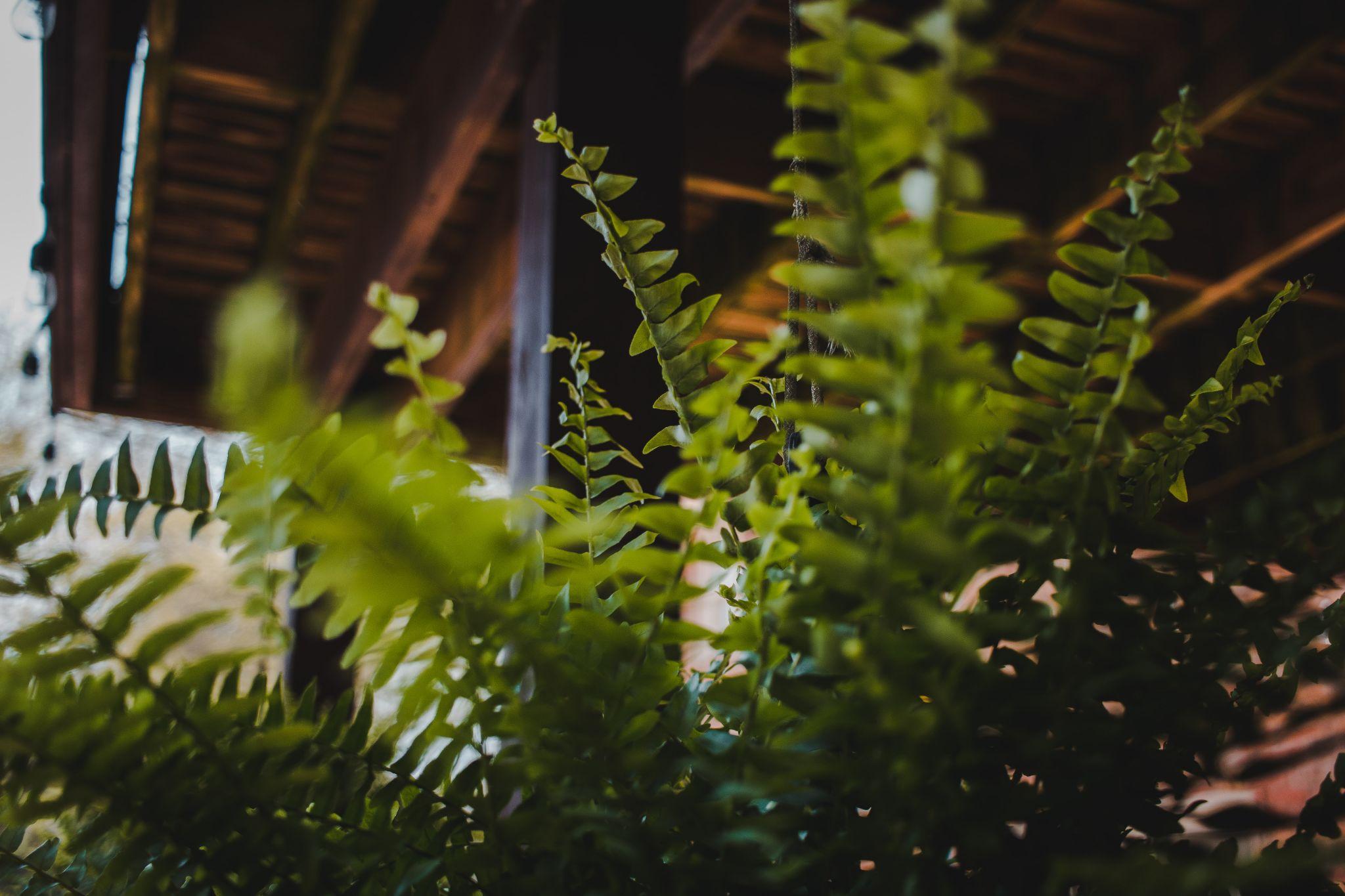
Boston Fern
How To Grow Low Light Plants.
Low light plants are perfect for those who want to add a splash of greenery to their home without having to worry about too much sunlight. These plants can thrive in dimly lit areas, making them ideal for rooms that don’t get a lot of natural light.
If you’re interested in growing low light plants, there are a few things you should keep in mind. First, it’s important to choose the right plant for your space. Not all plants do well in low light conditions, so it’s important to select one that is specifically designed to thrive in these conditions.
Once you’ve selected the perfect plant, you’ll need to provide it with the proper care. Low light plants need to be watered more frequently than plants that are grown in higher light conditions. Be sure to check the soil regularly and water when it is dry to the touch.
In addition to watering, low light plants also need to be fertilized more frequently than other plants. Use a water-soluble fertilizer and apply it every two weeks. Be sure to follow the directions on the fertilizer label to avoid over-fertilizing, which can damage the plant.
With proper care, low light plants can thrive in any space. These plants are a great way to add a touch of greenery to your home without having to worry about too much sunlight.
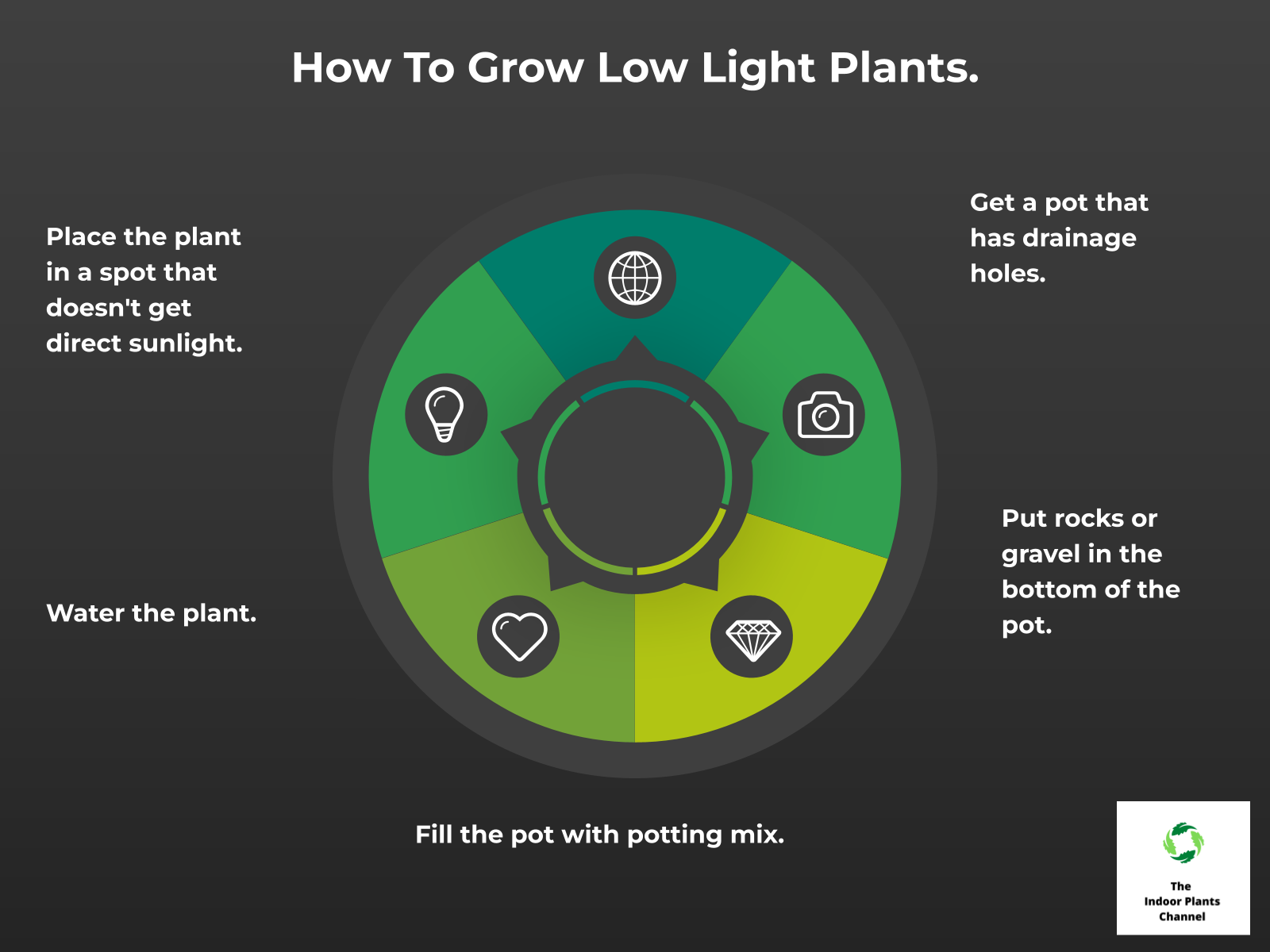
Quick Tips
- Start with an easy plant like a snake plant or a philodendron.
- Place your plant in a spot that gets bright, indirect light.
- Water your plant when the soil is dry to the touch.
- Feed your plant once a month with a low-nitrogen fertilizer.
- Keep an eye out for pests and diseases.
According to a study published in the journal HortTechnology, low light plants can help improve indoor air quality by reducing carbon dioxide levels and increasing oxygen levels. The study found that low light plants can also help reduce noise levels and improve work productivity.
Conclusion
To conclude, low light plants are a great addition to any home. They are easy to care for and can thrive in a variety of conditions. With a little research, you can find the perfect plant for your home.
Michelle Wilde
Related posts
6 Comments
Leave a Reply Cancel reply
![]()
About Michelle Wilde
Michelle Wilde is a stay-at-home mom and avid plant lover. Armed with a post-graduate degree in Computer Science (no kidding!), she loves researching plants and landscapes. When she is not caring for her 4 kids, she spends time on her passion for plants. She blogs at www.indoorplantschannel.com, the trusted source for indoor plants.
Learn more
Subscribe
* You will receive the latest posts and updates about indoor plants!
Search
Recent Posts
Categories
- Beginner Guides (10)
- FAQ (206)
- General (2)
- How-To Guides (212)
- Indoor Plants (214)
- Pest Management (2)
- Plant Problem Solutions (4)
- Seasonal Growing (2)
- Specialized Environments (2)
- Specific Plant Care (3)
- Technical Growing (2)
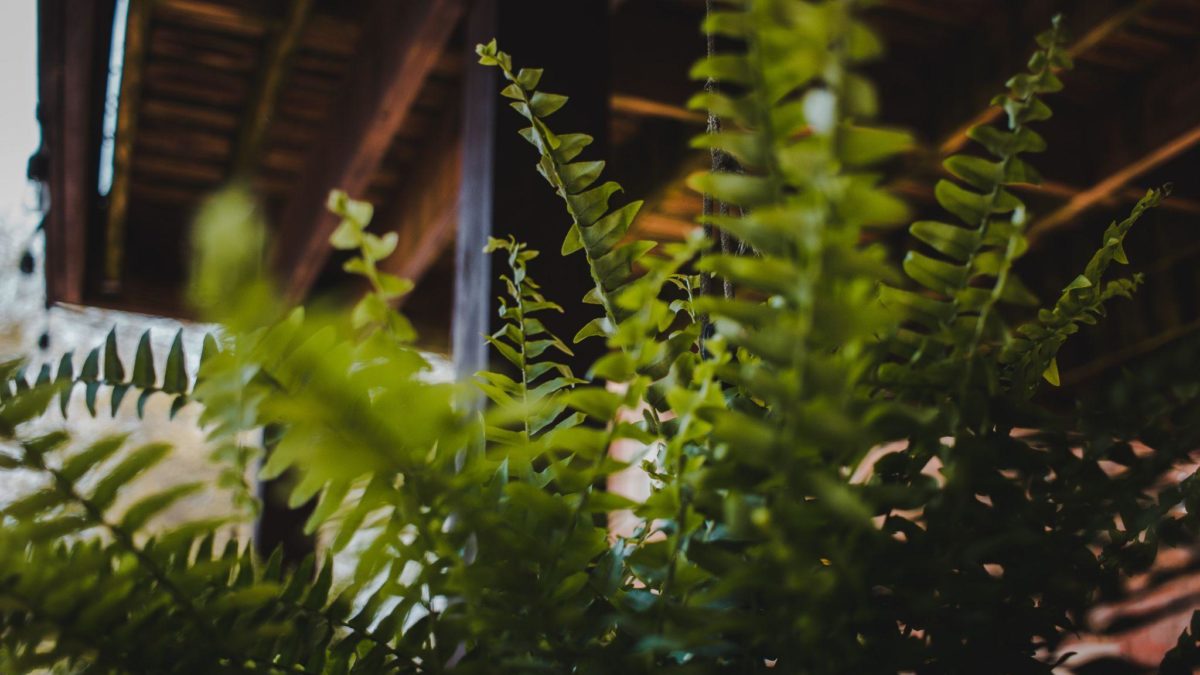
[…] The Adam’s needle is another great choice for a spiky houseplant in low-light conditions. It is an evergreen perennial that can reach up to six feet tall and is native to the southeastern United States. Adam’s needle is tolerant of a wide range of conditions, including low light. […]
[…] snake plants, ZZ plants are known for their durability. They can tolerate low light and infrequent watering, making them a great choice for those with a black thumb. ZZ plants are […]
[…] sure you are providing the plant with enough light. It should be in a spot where it gets bright, indirect sunlight. If it’s not getting enough […]
[…] in the space where you want to put the plant. If there is not much light, you will need to choose a plant that can tolerate low-light […]
[…] stricta is native to Central and South America and is another good choice for low light conditions. It has thick, stiff leaves that are typically green or yellow. They can tolerate low […]
[…] lilies are a type of flowering plant. They are very easy to care for and can tolerate low-light conditions. Peace lilies prefer humid conditions and will benefit from being placed in a bathroom […]